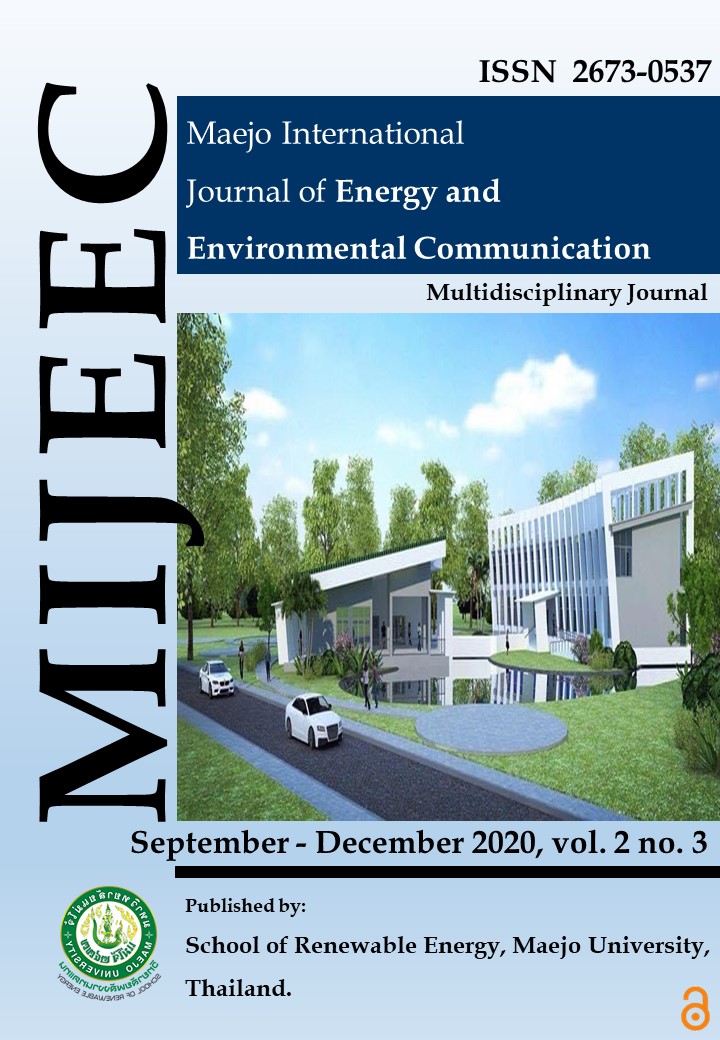Synthesis and characterization of TiO2 and palm oil fiber ash hybrid photocatalysts for seawater pretreatment
Main Article Content
Abstract
Titanium dioxide (TiO2) has been used in various applications such as air purification, water purification, and photoelectrochemical conversion systems. However, developing advanced materials with enhanced performance for catalytic applications, especially water treatment, is highly required. This work aims to study the effect of (TiO2) photocatalyst in pretreatment seawater desalination. The catalyst with a mass ratio of TiO2: palm oil fibre ash (POFA) at 0:100, 40:60, 60:40, and 100:0 was synthesized via wet impregnation. The catalyst was calcined at 500 ℃ for four hours. The mixture of artificial seawater and catalyst at a mass ratio of photocatalyst: artificial seawater at 1:300 was put in a one-litre borosilicate photo-reactor fixed with mercury light of 350 nm for two hours with stirring at 1000 rpm. In this investigation, an evaporator was used to collect the freshwater. The fresh and spent catalysts were characterized via X-Ray Diffractogram (XRD), Nitrogen physisorption analysis, Diffuse Reflectance Spectrometer (DRS), Scanning Electron Microscopy (SEM), and Energy Dispersive X-Ray Spectroscopy (EDX). The catalyst with Ti: palm oil fibre ash (POFA) at 40:60 and 60:40 can reduce the COD at 45 % and 41%, respectively. As more OPFA was added into the hybrid TiO2 catalyst, there has been a change in the properties of seawater due to the use of special evaporators, especially EC and TDS. It can be deduced that the hybrid TiO2 photocatalyst synthesized with OPFA has vast potential to treat seawater.
Article Details
Copyright © 2019 MIJEEC - Maejo International Journal of Energy and Environmental Communication, All rights reserved. This is an open-access article distributed under the terms of the Creative Commons Attribution-NonCommercial- Attribution 4.0 International (CC BY 4.0) License






